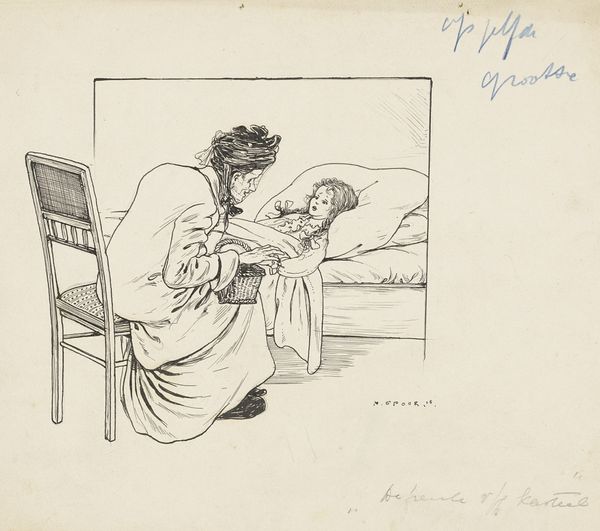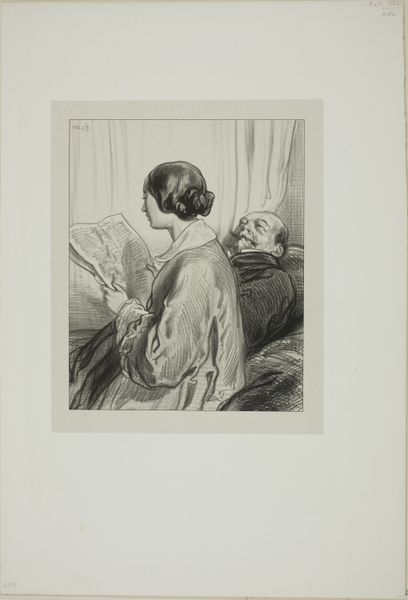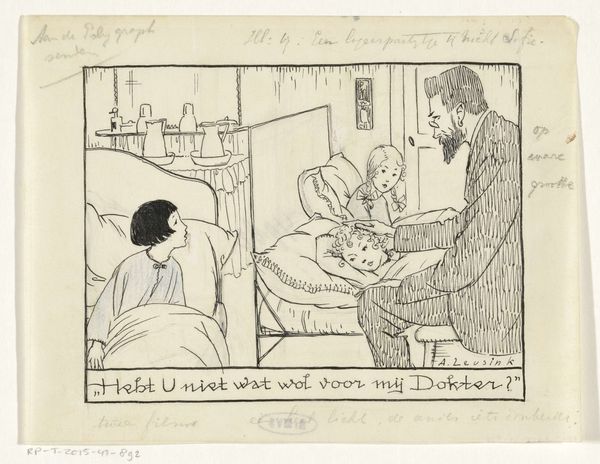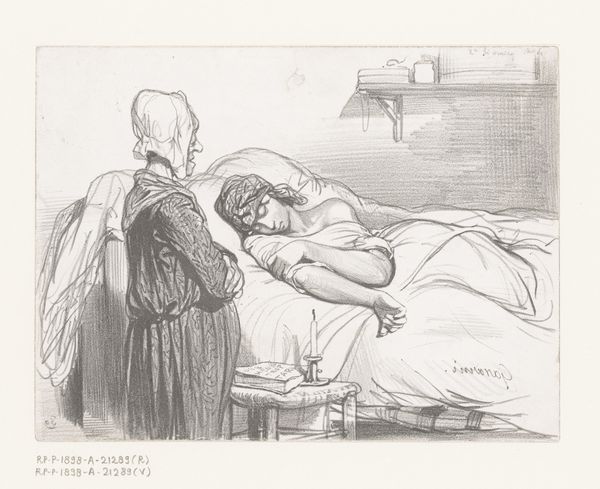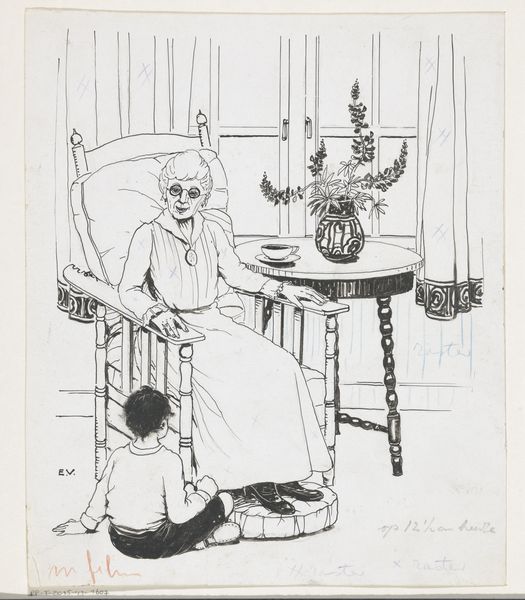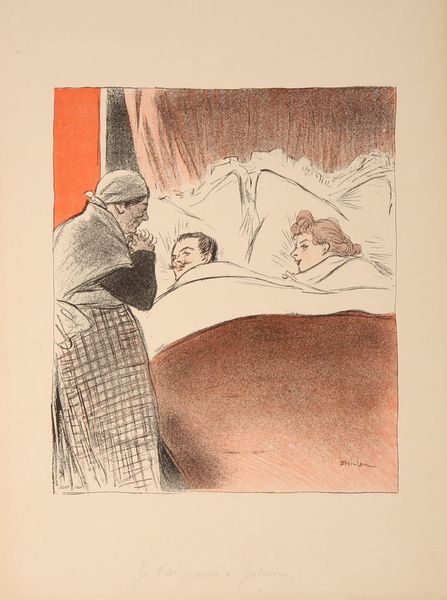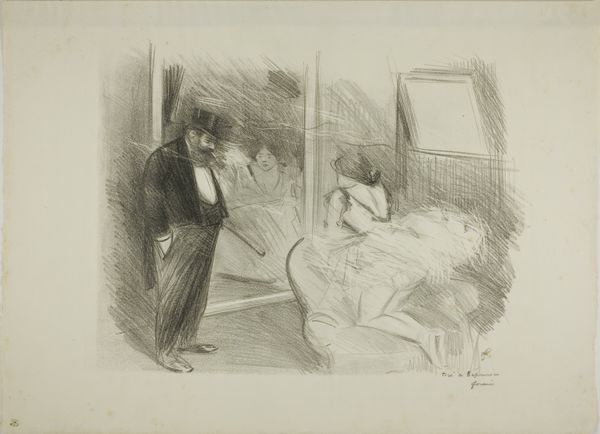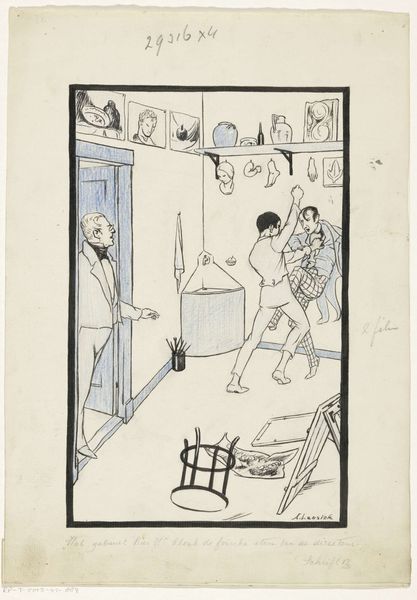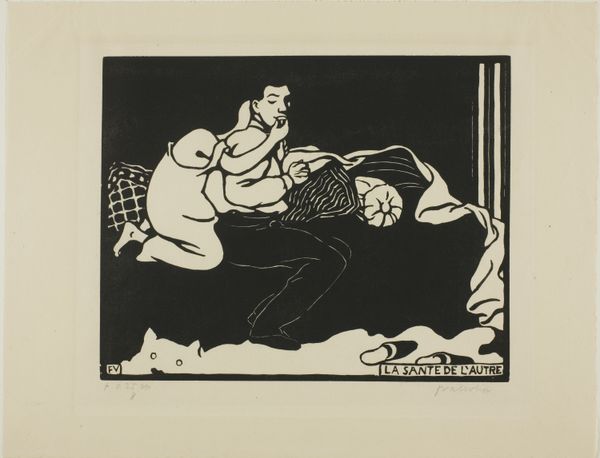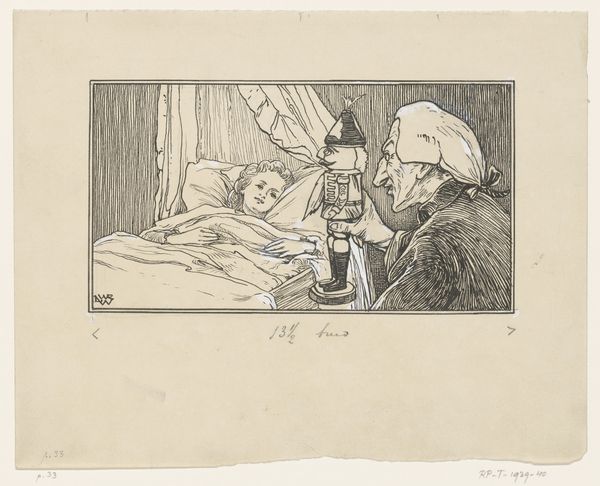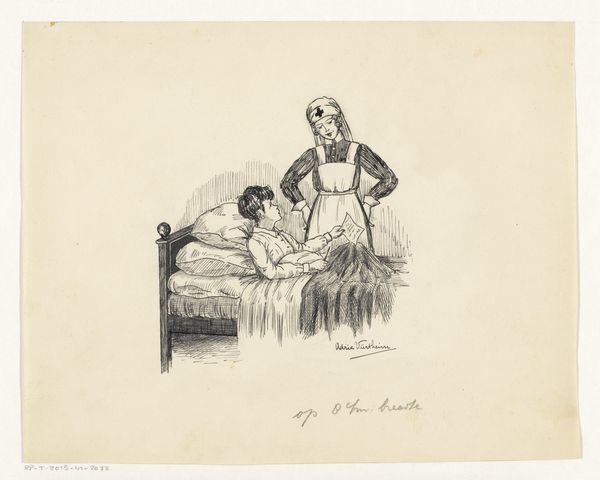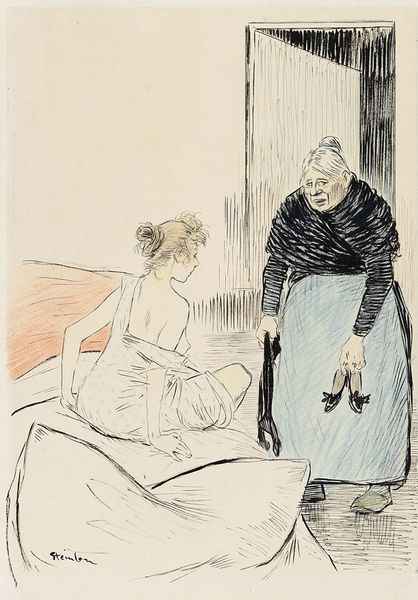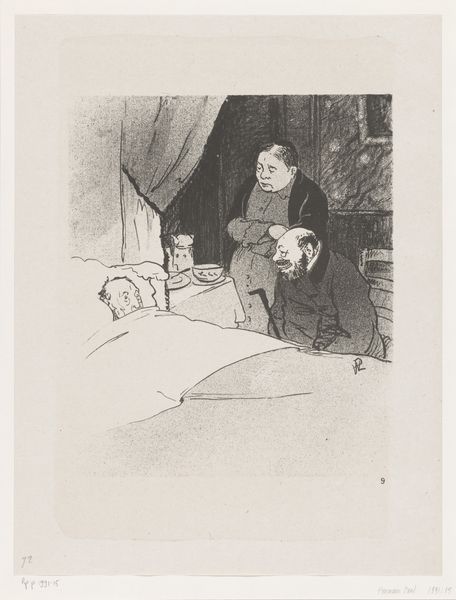
drawing, ink, pen
#
portrait
#
drawing
#
comic strip sketch
#
imaginative character sketch
#
mechanical pen drawing
#
cartoon sketch
#
personal sketchbook
#
ink
#
idea generation sketch
#
ink drawing experimentation
#
sketchbook drawing
#
pen
#
genre-painting
#
storyboard and sketchbook work
#
cartoon carciture
Dimensions: height 212 mm, width 250 mm
Copyright: Rijks Museum: Open Domain
Curator: Welcome. Today we're looking at Miep de Feijter's ink and pen drawing, "Jongen met weegschaal in een bed," dating circa 1928 to 1941. What are your initial impressions? Editor: I’m struck by the simplicity of the line work, the heavy outlines balanced with open space creating an atmosphere of both tenderness and isolation. It almost feels like a scene lifted from a graphic novel in its making. Curator: That graphic quality is something I noticed as well. It points toward a deliberate engagement with popular forms of visual media. Notice how De Feijter utilized ink and pen to produce defined lines and clear shapes, suggesting mass production techniques relevant in creating reproduced images, as one might find in a magazine. The materials were relatively inexpensive. Editor: Absolutely. The drawing hints at a wider commentary on caregiving within domestic settings, positioning the maternal figure—likely the child's mother or caretaker— in an attitude of constant giving. She embodies the societal expectations of women and mothers as nurturers. The tulips in the background emphasize notions of cyclical beauty, fertility, spring cleaning! Curator: The placement of the figure indeed invites social interpretation. I am particularly interested in the materiality of the tools being handled. It has a metal cup device – is this to deliver medicine or measure ingredients? What impact would these commodities have had on household functions during the period it was created? What did having reliable materials symbolize socially? Editor: The fact that the boy is holding scales in bed brings interesting contradictions: his childlike form, and what could easily be a difficult diagnosis of ailment that leads to him having to weight foods in his bed! This brings us to uncomfortable questions around institutional power, particularly surrounding women's care work for the domestic sphere. It could even act as metaphor. Curator: These readings enrich our understanding of the work's capacity to embody the era's shifting perspectives on gender and health. De Feijter utilizes art to illustrate how even items of scientific significance permeate and become reimagined within familial space. Editor: It certainly pushes viewers to question their preconceptions. Looking at it in its totality, the artwork can inspire thought and dialogue about how societal expectations, health infrastructure, and art intertwine in daily experiences. Curator: An interesting intersection that De Feijter achieves effectively through relatively minimal form, inviting discourse well beyond its initial making.
Comments
No comments
Be the first to comment and join the conversation on the ultimate creative platform.
